Topic
Replicating Blood
Article/ Student Clement Y
Translator/ Student Remi L
Teachers/ Christopher Hogarth & Joanne
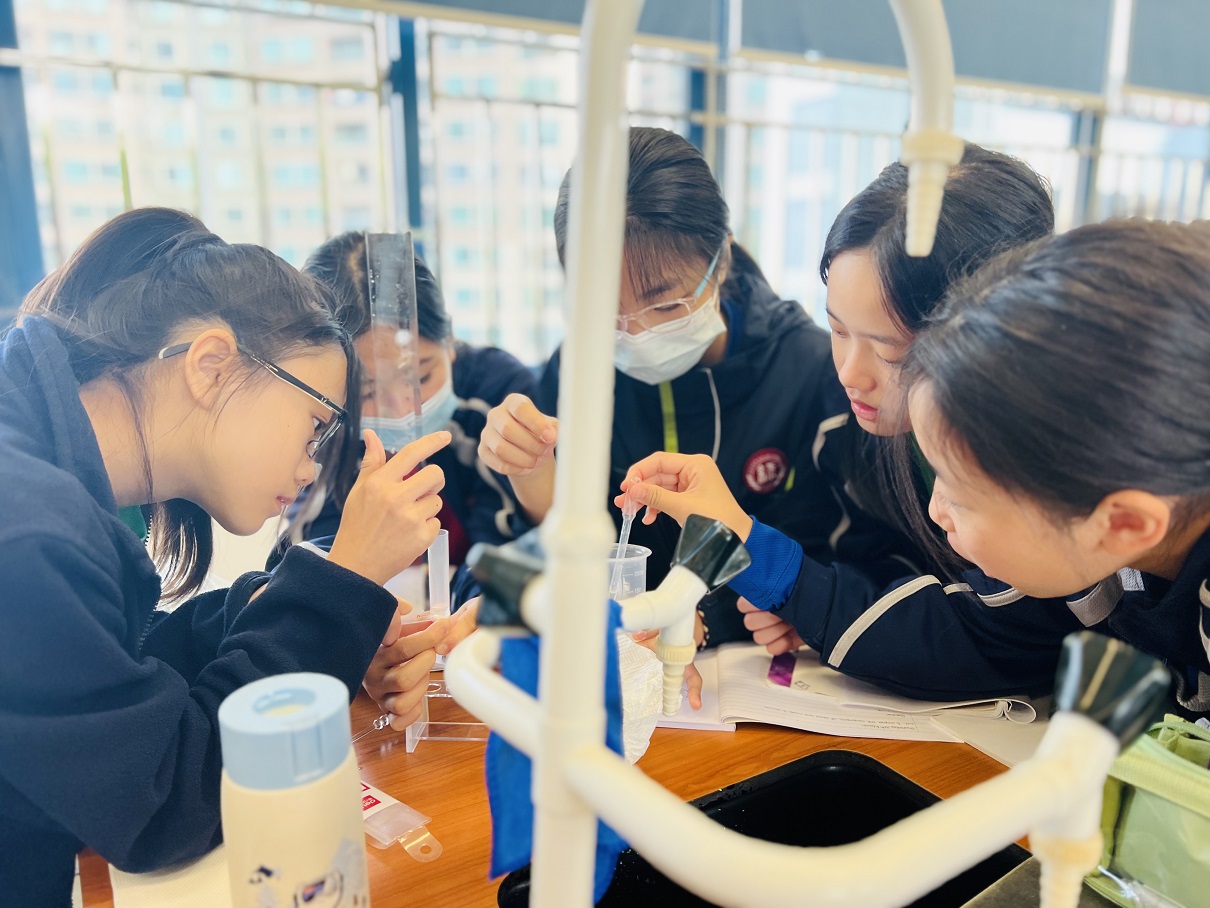
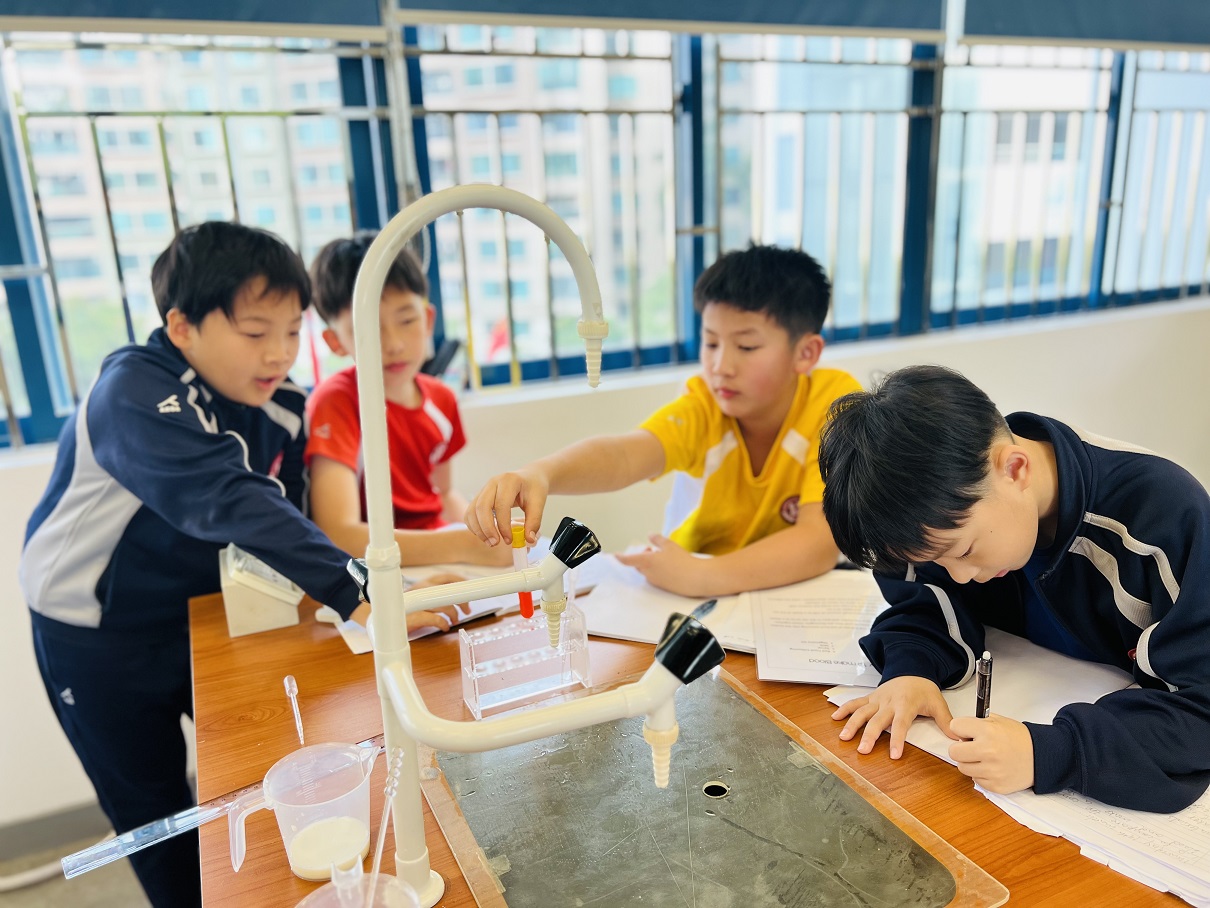
In our Topic class recently, we've been learning about the circulatory system, which includes the heart, blood vessels and blood. To better understand the components of human blood, and increase our interests in studying, in today's Topic, our class were in the science lab to replicate human blood.
As we have learned, there are four components of human blood: Plasma, which is a clear yellowish liquid, holding about 55% of blood, White blood cells and platelets, which is white, and Red blood cells, which is definitely red. To replicate human blood, we need to replicate all the components above by using different liquids.
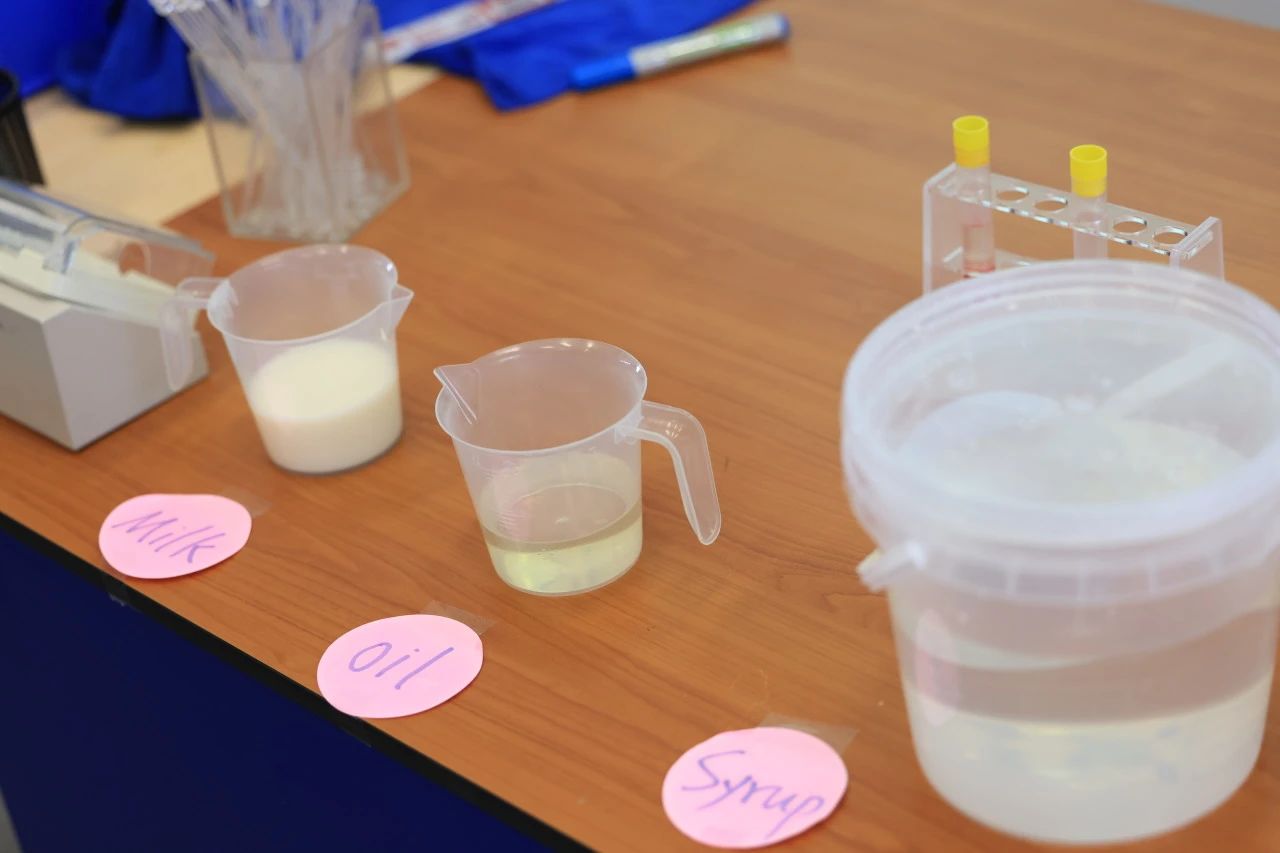
Our teacher Mr. Chris showed us the ingredients we need, which were quite unexpected: syrup, red food coloring, milk, and even vegetable oil! To replicate blood, we also need tools, such as: a beaker, a test tube (and its holder of course), pipettes, and a ruler.
Method
The method is quite easy, it is kind of just a blend of all the ingredients, but the percentage of each of the ingredients needed is very crucial. There are 6 steps in total:
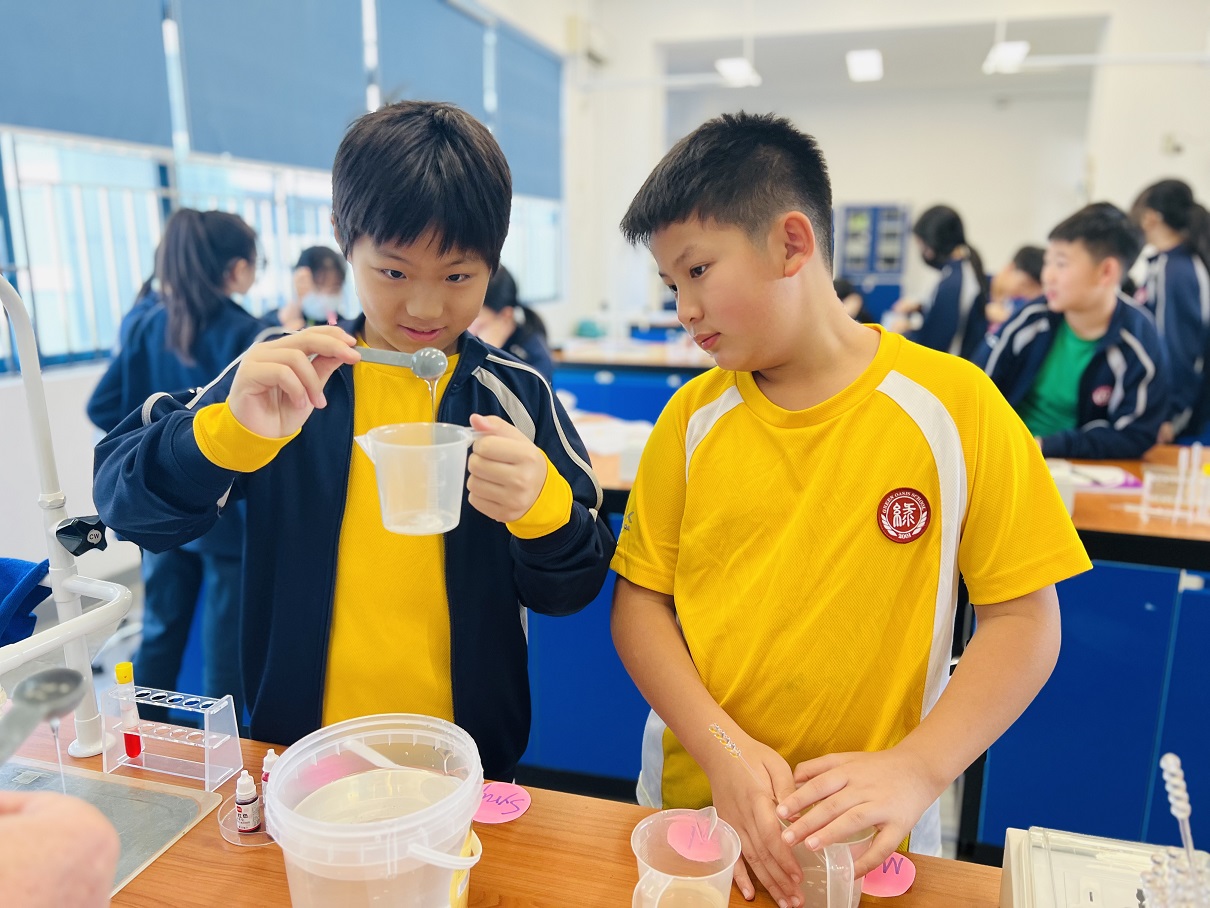
Step 1: Pour 20ml of the syrup and 4 drops of the red food coloring into the beaker.
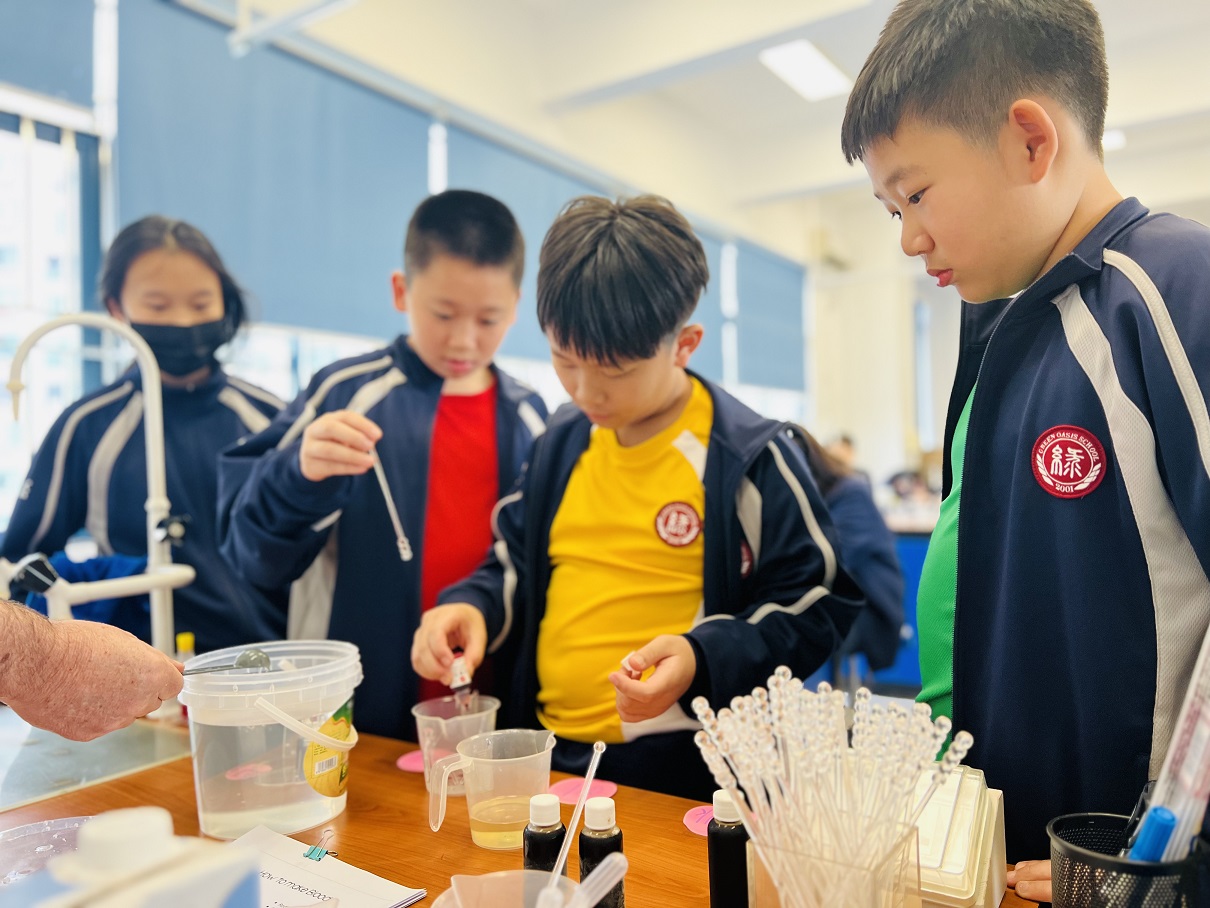
Step 2: Stir the red syrup mixture until it is thoroughly mixed together. This red syrup mixture represents the red blood cells.
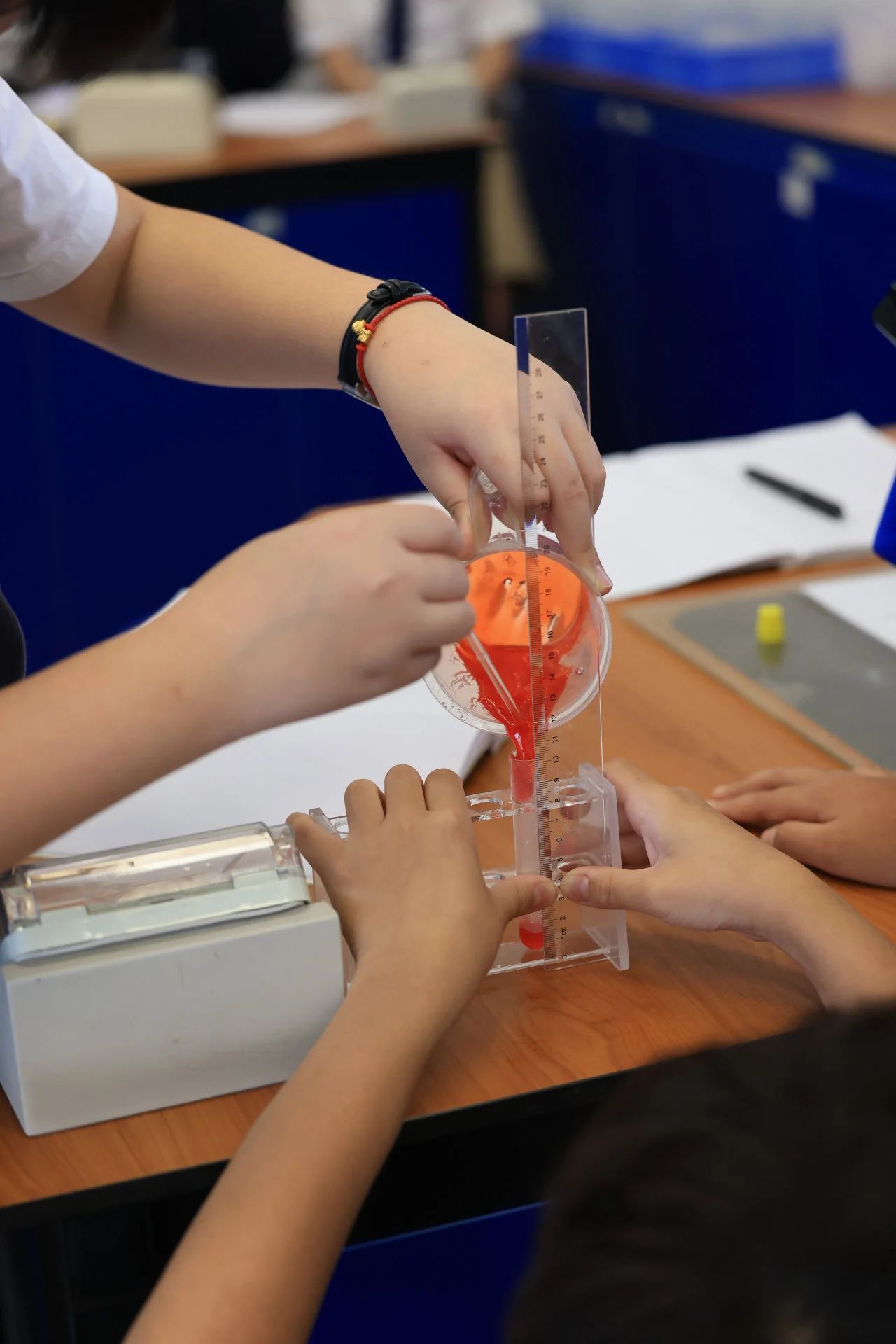
Step 3: Place the test tube in the holder and pour in the red syrup to a depth of 2cm.
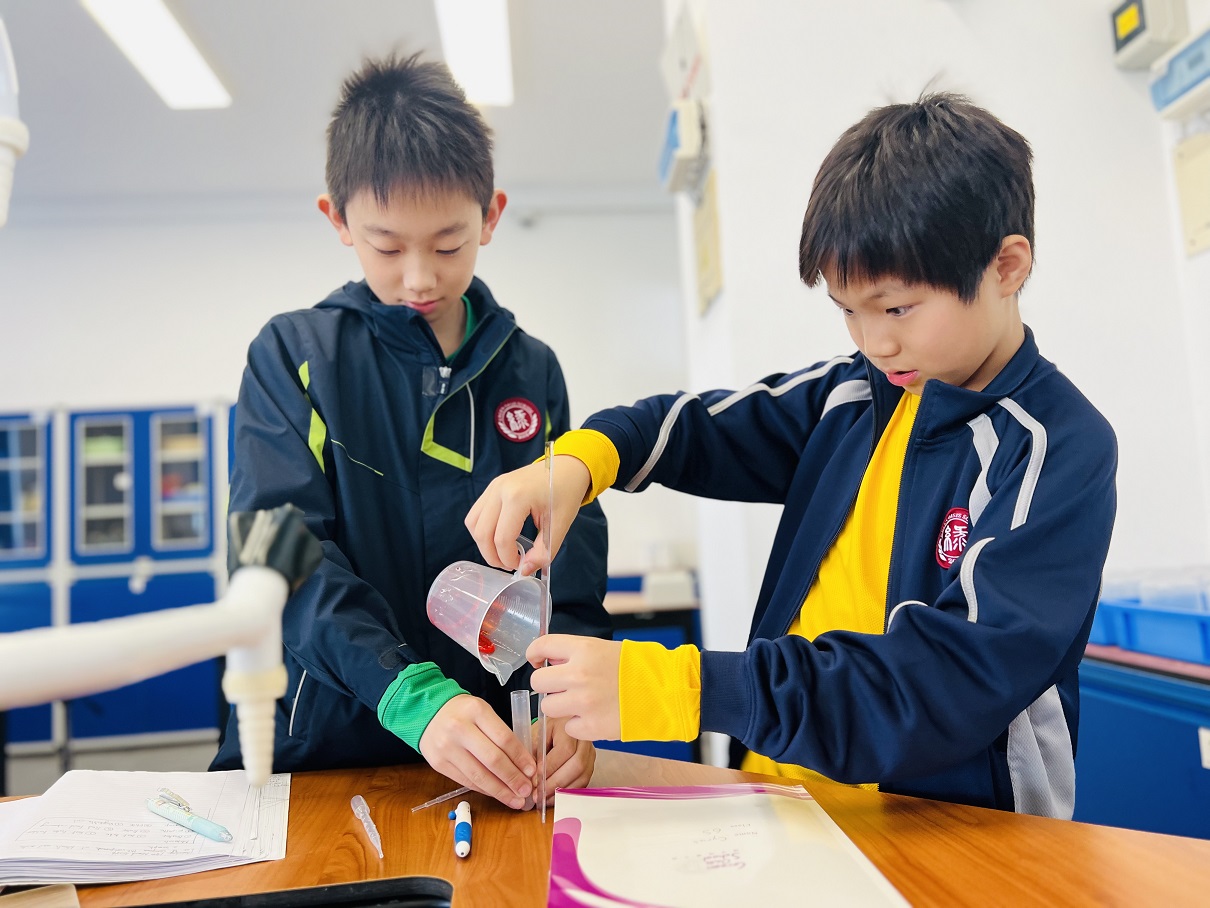
Step 4: Add the milk to a depth of 0.5cm with a pipette. Milk stands for the white blood cells and the platelets.
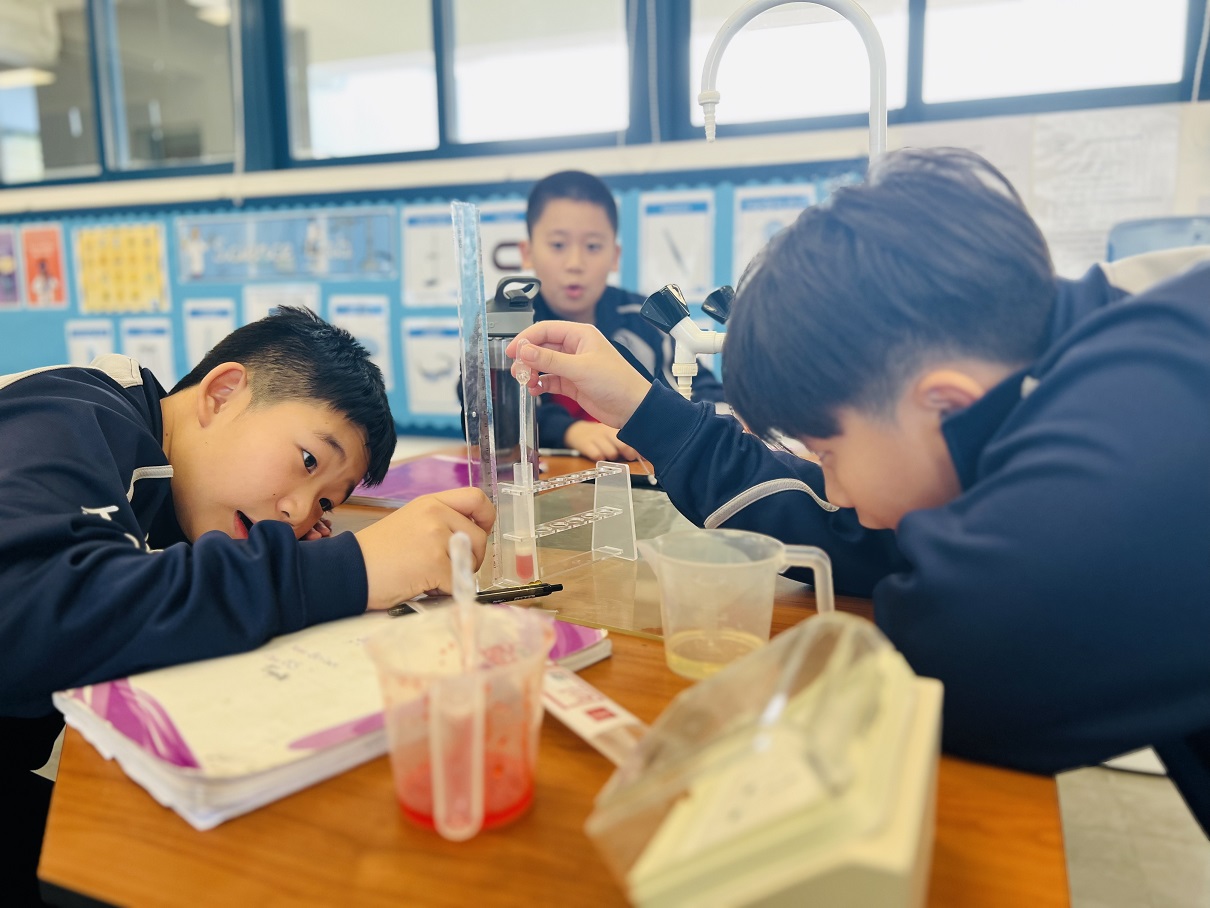
Step 5: Pour the vegetable oil on top to a depth of 3cm, and the vegetable oil looks just like plasma.
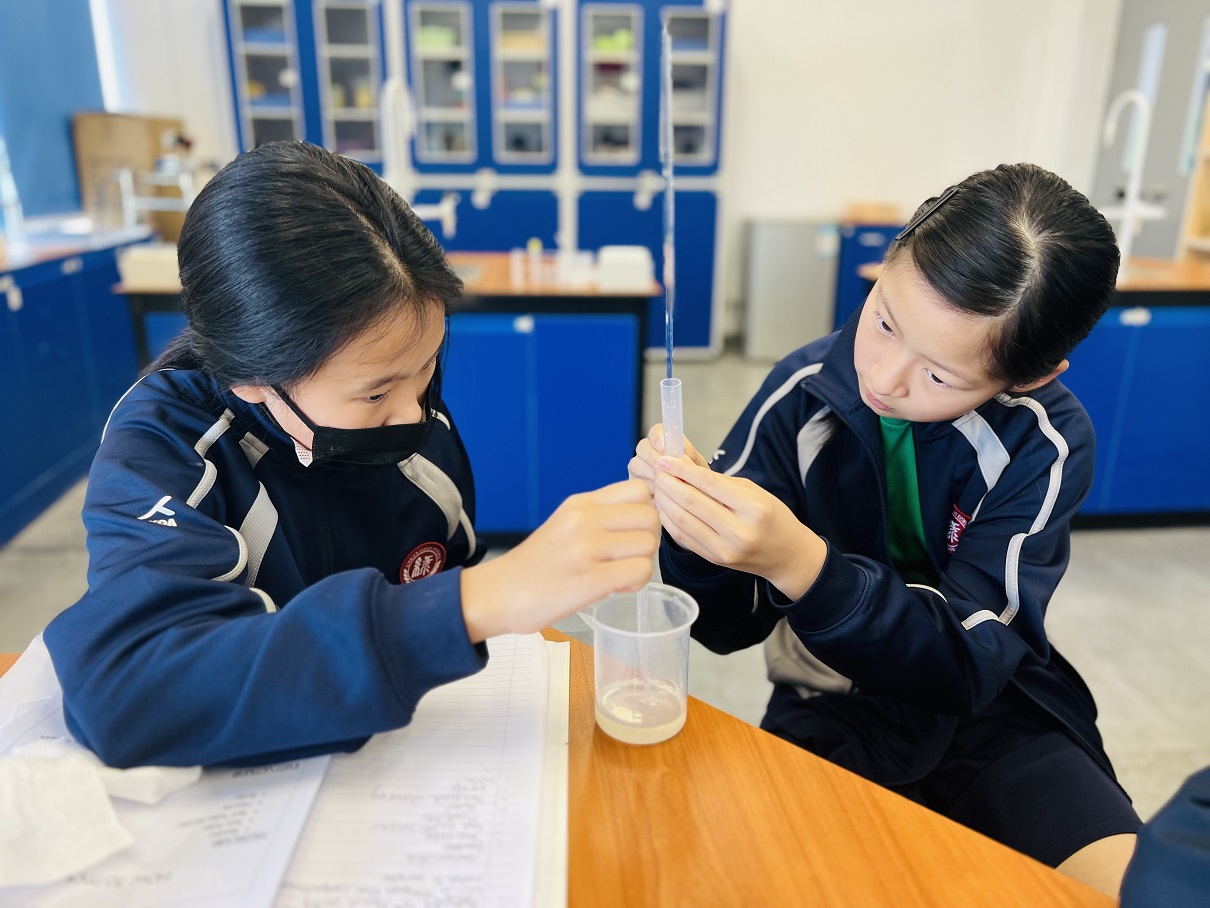
Step 6: Put the cap on the test tube and shake until the layers cannot be seen anymore.
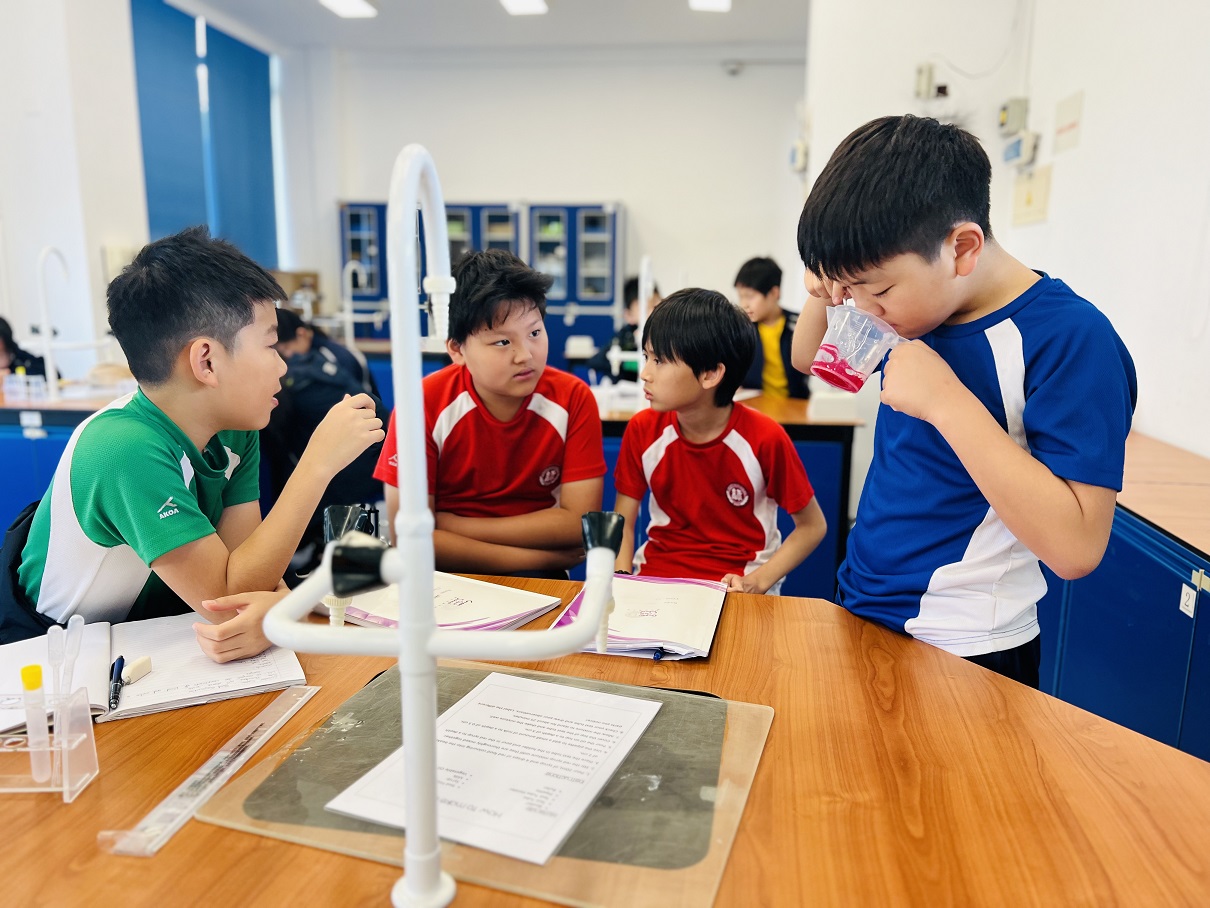
After all the steps above, we placed the test tube on its holder and waited for the mixture to strand for 25 minutes, I observed the result and I discovered surprisingly that the mixture turned back to the start when it wasn’t mixed at all! I think it is all because of the different densities of the liquids we use in this experiment. If we add anticoagulant to human blood and strand it, the same will happen.
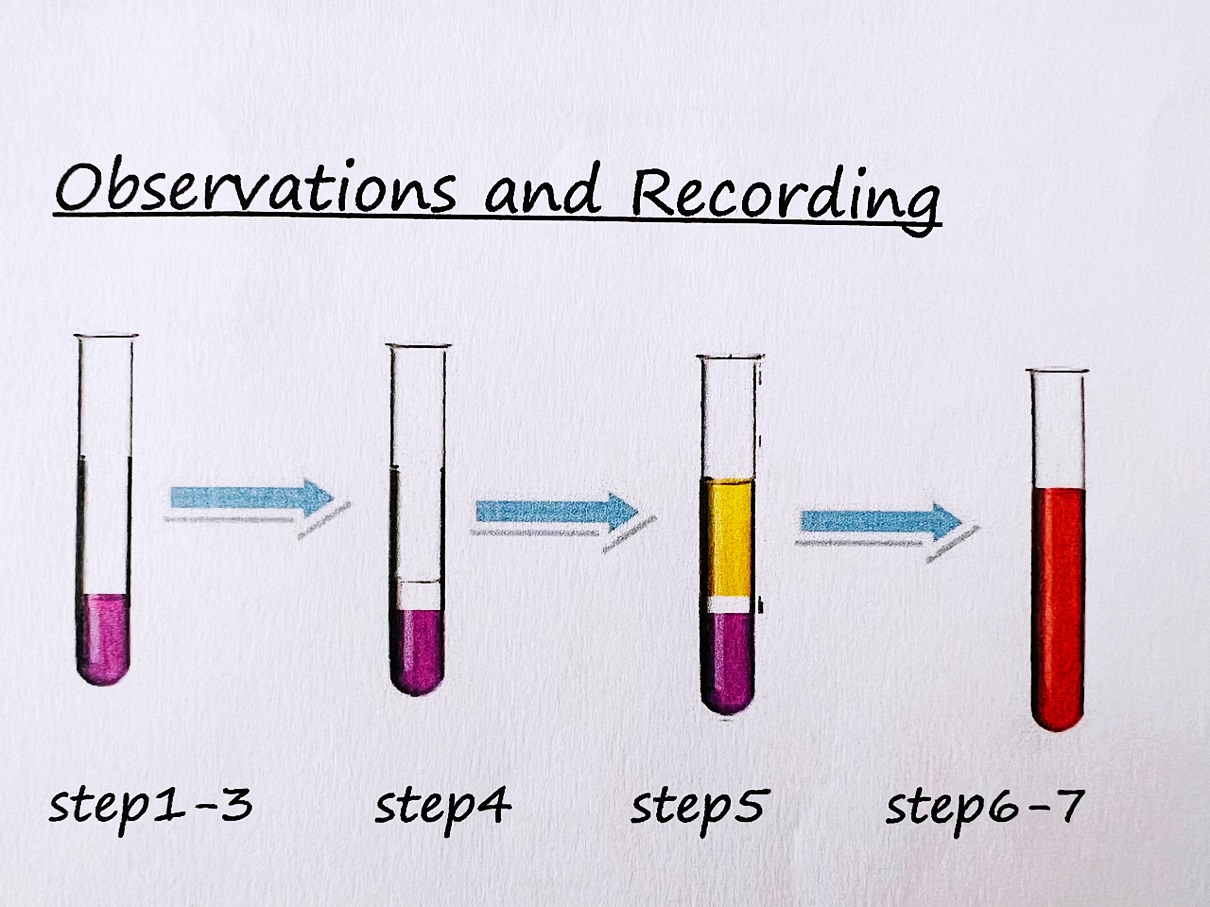
Picture by Daniel Y
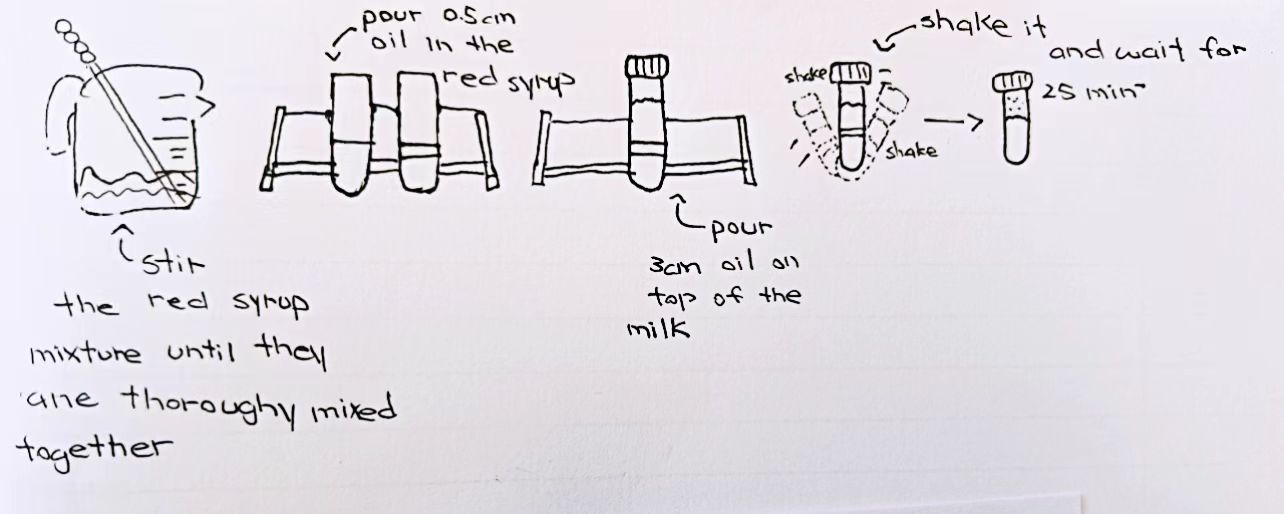
Picture by Chloe C
Experiments give us a more intuitive and impressive way to understand and remember the things we need to learn. As there is a Chinese saying: It is better to see once than to hear a hundred times. Throughout this experiment, the image of the layers of our replicated blood stuck helplessly in my mind. I also learned that the red blood cells will sink to the bottom, the white blood cells and platelets always stay in the middle, and plasma floats to the top all the time, because the components of blood have different densities, and the bigger the density of liquid, the deeper it goes.
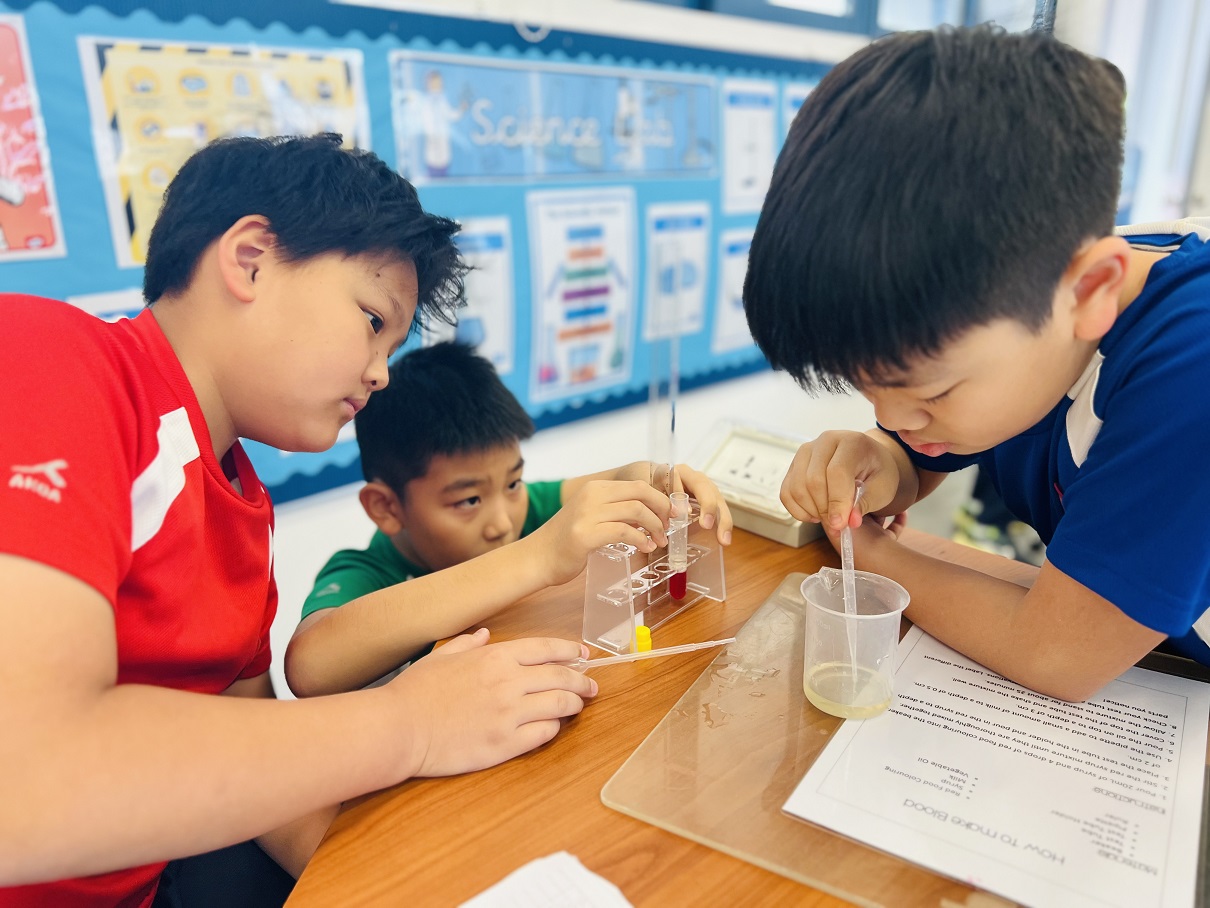
This experiment underscored the importance of teamwork, experimentation, and observation in scientific endeavors. Each step, from the selection of ingredients to the final observation, was a learning opportunity. We discovered the unpredictability of science, where outcomes can defy expectations, leading to new insights and questions. Our successful simulation of blood was not just a project accomplishment but a magical journey into the heart of scientific exploration.




 Home
Home  About Us
About Us 
 Admissions
Admissions  Curriculum
Curriculum  Pastoral
Pastoral  School Life
School Life  LMS
LMS  Contact Us
Contact Us 









 Home
Home  About Us
About Us  Admissions
Admissions  Curriculum
Curriculum  Pastoral
Pastoral  School Life
School Life  LMS
LMS  Contact Us
Contact Us 

